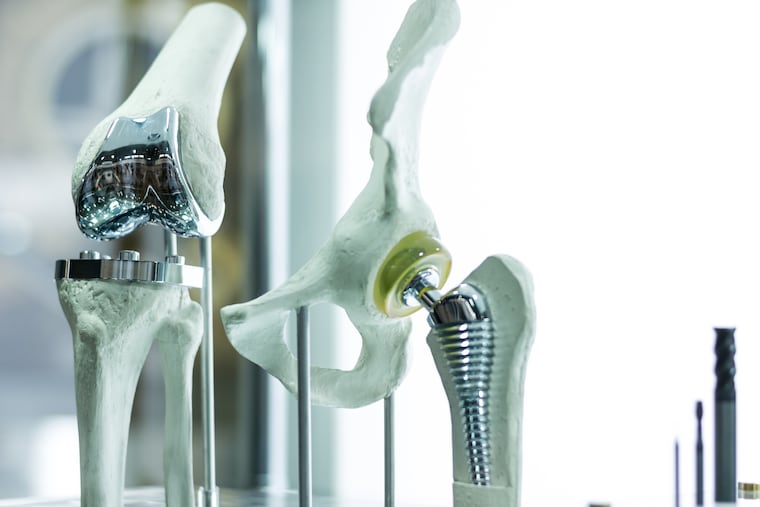Medical-device companies pay doctors more than pharmaceuticals, Penn study finds
Medical device companies spend millions of dollars a year on payments to doctors, a new study by University of Pennsylvania researchers found.

The medical-device industry spends millions of dollars a year on payments to doctors — more than pharmaceutical companies that have been criticized for such payments — yet little is known about how the financial relationship between those who make implants and doctors affects patient care.
Pharmaceutical company payments to doctors have been heavily scrutinized in recent years out of concern that doctors who receive significant payments from drug companies are more likely to prescribe that company’s medications, even if they are not the best option for patients.
A new study by researchers at University of Pennsylvania’s Leonard Davis Institute of Health Economics found that the implantable-medical-device industry — such as prosthetic knees and hips, pacemakers, and spine spacers — outspends the much larger pharmaceutical industry. Medical-device companies paid $3.67 billion to doctors between 2014 and 2017 — about 10% more than pharmaceutical companies, according to researchers’ analysis of Open Payments data.
The $3.67 billion that medical-device companies paid doctors accounts for about 1.7% of the industry’s $211.3 billion revenue during that period. Comparatively, doctor payments account for about 0.24% of pharmaceutical-industry revenue.
“The concern is the nature of the discussion that goes on when the pharmaceutical or device representative goes and meets with the physician,” said Alon Bergman, a postdoctoral researcher at the Leonard Davis Institute and a co-author of the study.
“The age-old question in pharmaceutical studies and here as well is whether it’s information or persuasion,” he said. “How much of this interaction is about providing information and guidance and how much of it is swaying them to prescribe a drug or implant a device that is not necessarily the best product for the patient?”
The study, published this week in Health Affairs, does not draw conclusions about whether the payments influenced doctors’ treatment plans for patients, but it offers insight into the relationship between medical-device companies and doctors that Bergman says is a first step in answering that question.
While both medical-device companies and pharmaceutical companies have financial ties to doctors, the relationships are different, in terms of which types of doctors receive payments, and the purpose of the exchange, Bergman said.
About 30% of doctors received a payment from a device company, while half received money from a drug company.
Device company spending was concentrated on surgical specialties, with neurosurgery, orthopedics, urology, and cardiology receiving the most money from firms. Three-quarters of neurosurgeons and orthopedic surgeons received payments from device vendors.
Meanwhile, drug company payments were more common among nonsurgical specialties, such as rheumatology, hematology-oncology, and gastroenterology.
Researchers also found differences in the nature of payments, with much of the money from device companies going toward training and education. The findings show that medical-device representatives likely develop close relationships with doctors to provide technical assistance and feedback on the devices.
“Medical-device companies rely on partnerships with doctors at every step of the innovation process,” said Scott Whitaker, CEO of AdvaMed, which represents the medical-device industry. Device companies rely on doctors to help develop and refine new products, and ensure they are safe for patients.
“This kind of collaboration between medtech and providers is critical,” and AdvaMed has its own code of ethics that a majority of member companies have signed to ensure the work is done in the interest of patients, Whitaker said.
Still, Bergman said the relationship warrants a closer look.
“Such interactions may facilitate training on the use of existing products and innovation of new products, but they may also represent opportunities for firm representatives to influence physicians’ treatment decisions,” Bergman wrote in a blog post about the study.
He and his colleagues are planning another study to explore whether the close relationship between medical-device companies and doctors influences treatment decisions.